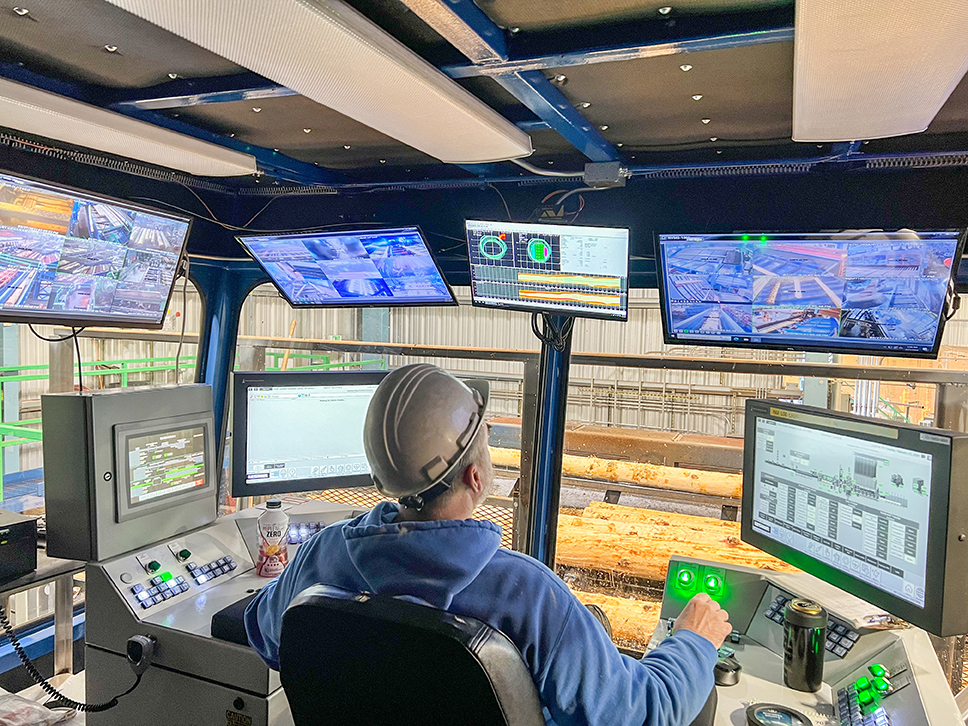This blog was submitted by Southern Forest Products Association associate member Opticom Tech. The original post can be found by clicking here.
Video monitoring in industrial facilities has evolved far beyond mere security surveillance.
Surveillance is important — by preventing break-ins, you can save a lot of money and headaches. However, video monitoring goes far beyond that. Industrial facility managers use footage to get invaluable insights into their daily operations and processes. Some industrial facilities only think about using cameras for security.
So it’s only natural they wonder whether a proper, ruggedized video monitoring system is worth the investment.
What to Budget for When Buying a Video Monitoring System
At first glance, the cost of installing an industrial video monitoring system might seem significant. Expenses can include the initial purchase of cameras, installation, networking, maintenance, and software. For instance, the upfront cost of a high-quality, rugged camera system designed specifically for industrial applications might range from a few thousand to tens of thousands of dollars, depending on the scale of the facility and the complexity of the system. Out of context, that might seem like a lot. Keep reading to understand why the benefits are worth it.
Enhanced Safety, Compliance via Video Monitoring
One of the most compelling reasons to invest in industrial video monitoring is enhanced safety and compliance, which is paramount in high-risk environments such as manufacturing plants, construction sites, and sawmills, A video monitoring system can serve as the eyes and ears of your safety managers, providing real-time surveillance and historical footage that can be reviewed to ensure compliance with safety protocols. By monitoring areas where human presence is either impractical or dangerous, cameras can reduce the risk of accidents. In cases where incidents do occur, video footage can be used to investigate the cause and prevent future occurrences. Footage can also be used as evidence to support compliance with regulatory requirements, potentially avoiding costly fines or legal disputes. Consider the potential costs of not having a monitoring system. An undetected safety violation could lead to a serious accident, resulting in downtime, medical expenses, legal fees, and damage to the company’s reputation. These costs alone can far exceed the price of installing a video monitoring system.
Improve Operational Efficiency with Video Monitoring
Beyond safety, industrial video monitoring offers significant advantages in terms of operational efficiency. Cameras strategically placed throughout a facility can help your managers monitor production lines, identify bottlenecks, and optimize workflows. By having a constant visual on operations, you can address and identify inefficiencies to reduce waste and improve productivity. For example, a manufacturing plant might use video monitoring to track the performance of machinery and workers on the production line. If a machine frequently malfunctions or if there is a consistent delay at a particular stage in the process, these issues can be promptly addressed. Consider this: How much extra revenue would you make if you could improve your productivity by 5%? A video monitoring system can help you achieve that growth or even more, depending on your industry and current productivity levels.
Video Monitoring to Reduce Downtime, Maintenance Costs
Downtime is one of the most costly issues that can plague an industrial facility. Whether caused by equipment failure, safety incidents, or operational inefficiencies, downtime can lead to significant financial losses. Video monitoring plays a crucial role in minimizing downtime by enabling proactive maintenance and rapid response to issues. By continuously monitoring critical areas of the facility, a remote operator can alert managers to potential problems before they escalate. For example, if a camera detects that a machine is overheating or if there is a visible oil leak, maintenance teams can be dispatched immediately to address the issue before it leads to a full shutdown. Furthermore, video monitoring can aid in the diagnosis of equipment issues. By reviewing footage of the moments leading up to a failure, your maintenance teams can identify the root cause more quickly, thus reducing the time needed for repairs and getting operations back online faster.
Costs of Not Having a Camera System
Without video monitoring, a facility is more vulnerable to accidents, inefficiencies, theft, and extended downtime — all of which can result in significant financial losses. For example, a single incident of undetected equipment failure could lead to hours or even days of downtime. Without the ability to quickly diagnose and address the issue, the facility could lose thousands of dollars in productivity, not to mention the potential costs associated with repairs and replacement parts.
An Investment with a Long-Term ROI
We live in the era of speed, so we want everything fast. Here’s how it really works:
- You install your video monitoring system
- You start gathering insights into your processes and operations
- You analyze the footage to find gaps and opportunities for improvement
- You implement new processes
Typically, it takes a couple of months to see ROI. There are a few exceptions, of course, like safety and security: with video monitoring, you can spot these right away and save a lot of money and, potentially, even lives. The good part about video monitoring ROI is that you will enjoy it for years to come. A better, faster process will yield extra revenue for years, not days. Since video monitoring has a low cost of ownership, especially if you invest in ruggedized cameras, it’s a no-brainer to install in industrial facilities.
Click here to learn more from Opticom Tech.
Not an SFPA member? Learn more about becoming a member of the Southern Forest Products Association here.
